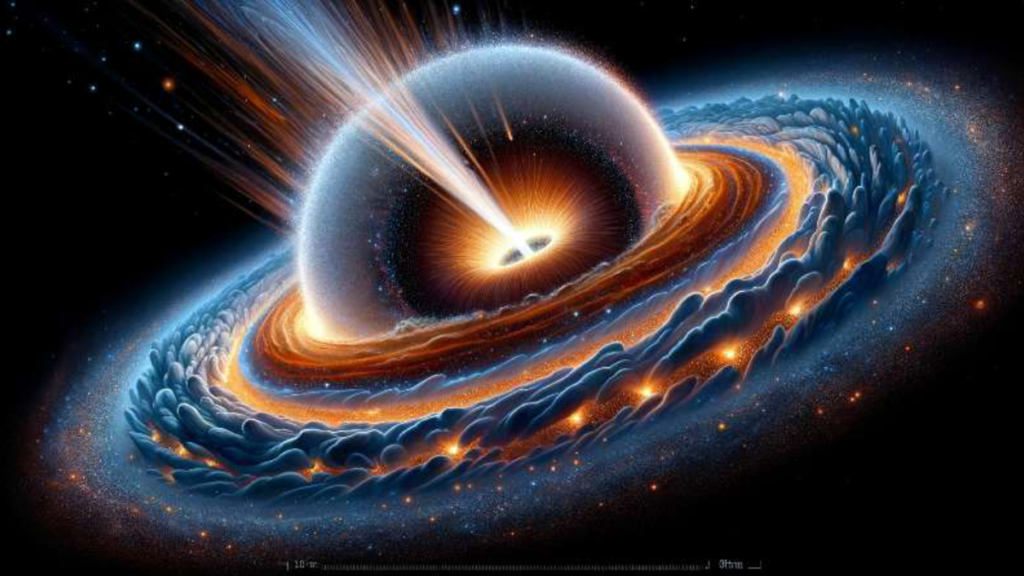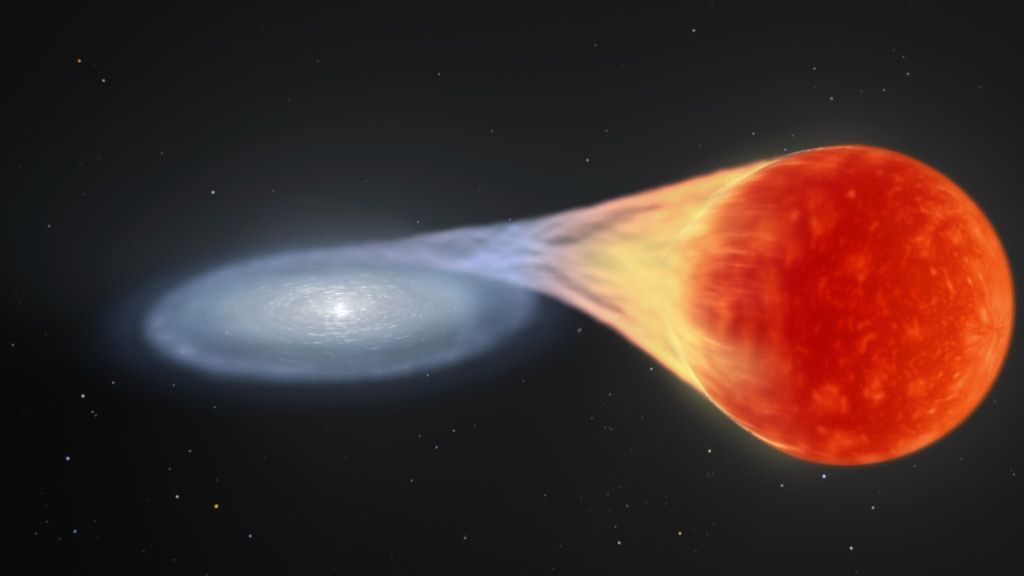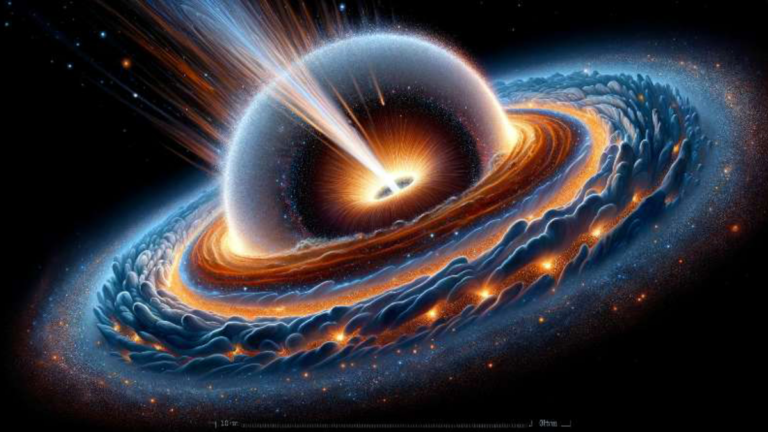The supernovae are causing a commotion, playing a role in the cycle of life and death in the cosmos.
Astronomers are now one step closer to comprehending the life and death cycle of stars with the revelation that “vampire” white dwarfs disperse dust.
A previously unknown origin of cosmic dust has been uncovered by astronomers. This dust holds significant value in terms of tracking its whereabouts. Essentially, these particles serve as the fundamental components for the creation of stars.

The international team of researchers has determined that this dust can be generated through a specific type of cosmic explosion. This explosion occurs when a deceased white dwarf star strips material from a neighboring stellar companion and subsequently interacts with gas from its immediate surroundings. These occurrences are commonly referred to as “Type 1a supernovas” and are often regarded as “standard candles” by astronomers due to their consistent light output, which aids in measuring cosmic distances.
“The formation of cosmic dust holds immense importance in the field of astronomy,” stated Lifan Wang, an astronomer from Texas A&M University and member of the research team. “It is intricately linked to all phenomena within the cosmos. Understanding the process by which it is formed has been a primary objective for numerous modern-day astronomical missions.”
Supernovas have been linked to the formation of cosmic dust before, but previous studies have focused on “core-collapse supernovas.” These occur when a large star depletes its fuel for nuclear fusion, causing its core to collapse and giving birth to a black hole or neutron star. The outer layers of the star are then expelled in a supernova explosion.
However, core-collapse supernovas are not observed in elliptical galaxies, which are more like clusters of stars rather than the organized spirals seen in the Milky Way. This has posed a challenge for astronomers in understanding the origin of dust in elliptical galaxies.
Now, Wang and his colleagues have proposed a solution: the dust in elliptical galaxies may come from “vampire white dwarfs” that consume material from a cosmic companion before undergoing a thermonuclear explosion.
Wang stated, “All life forms in the universe are cosmic dust formed through processes related to the evolution of stars. Our research provides compelling evidence of a significant amount of dust particles condensing after the explosion of a white dwarf star.”
Life after death for white dwarfs
White dwarfs are compact remnants of stars that have depleted their nuclear fusion fuel and undergone core collapse. However, these smaller stellar remnants lack the necessary mass to undergo a complete collapse, which would result in the formation of a black hole or neutron star. Instead, they evolve into white dwarfs.
In approximately 5 billion years, our own sun will go through this process when it depletes its hydrogen fuel at its core. Unlike some white dwarfs, which exist in binary systems with companion stars that can rejuvenate them, our sun will experience a solitary demise as a cooling white dwarf.
When white dwarfs are in close proximity to their companion stars, they have the ability to “acquire” material from the outer layers of their stellar companions. This material forms a disk around the white dwarf and gradually migrates towards its surface.
Over time, this accumulated matter increases the mass of the white dwarf beyond the Chandrasekhar limit, which is equivalent to 1.4 times the mass of the sun. The Chandrasekhar limit represents the maximum mass at which a star can go supernova. Ultimately, this process leads to a thermonuclear explosion known as a Type 1a supernova.

Wang and his colleagues conducted an extensive observation of the supernova SN 2018evt for a period of more than three years. They utilized various space-based instruments, including NASA’s Spitzer Space Telescope and the NEOWISE mission, along with multiple ground-based observatories. Their objective was to investigate whether Type 1a supernovas could be responsible for the presence of cosmic dust.
During their study, the researchers discovered that the supernova had collided with material that had been expelled from stars in the binary system. They also observed the white dwarf star consuming its companion before undergoing a thermonuclear explosion. This collision generated shockwaves that propagated through the expelled gas, resulting in the formation of dust as the gas cooled down after the passage of the shockwaves.
The team identified a distinct characteristic indicating the creation of dust in this supernova. They observed a decrease in the supernova’s brightness in optical light, accompanied by an increase in brightness in infrared light. Based on this observation, the researchers estimated that the collision had produced a substantial amount of dust, equivalent to approximately 1% of the sun’s mass. Furthermore, they anticipate that as the gas continues to cool, the production of dust will escalate by up to tenfold.
Lingzhi Wang, a scientist at the Chinese Academy of Sciences South America Center for Astronomy in Chile and a member of the research team, emphasized the significance of their findings. He stated that the origins of cosmic dust have long remained a mystery, and their research represents the first detection of a significant and rapid process of dust formation in a thermonuclear supernova interacting with circumstellar gas.
According to this research, it appears that Type 1a supernovas are not as efficient as their core collapse counterparts when it comes to producing gas. However, this deficiency might be compensated by the fact that there could be a sufficient number of Type 1a supernovas interacting with their surroundings, making them a significant, or even dominant, source of dust in elliptical galaxies.
Wang, a researcher involved in the study, mentioned that this work provides valuable insights into the role of thermonuclear supernovas in the creation of cosmic dust. Furthermore, with the advent of the James Webb Space Telescope, it is anticipated that more such events will be discovered in the future. The Webb Telescope’s ability to detect infrared light makes it particularly suitable for dust detection.
The team’s findings also reveal that white dwarfs can play a crucial part in the continuous cycle of star formation and destruction, as well as in the processes that lead to the formation of planets and, potentially, life as we know it.
Andy Howell, a scientist from the Las Cumbres Observatory, explained that the formation of dust occurs when gas cools down enough to condense. Eventually, this dust can condense further into planetesimals and, ultimately, give rise to planets. This signifies a new beginning in the aftermath of stellar death, adding another fascinating aspect to the interconnected cycle of life and death in the vast universe.
The research was published on Friday (Feb. 9) in the journal Nature Astronomy.
Do not forget to share your opinion with us to provide you with the best posts !




0 Comments